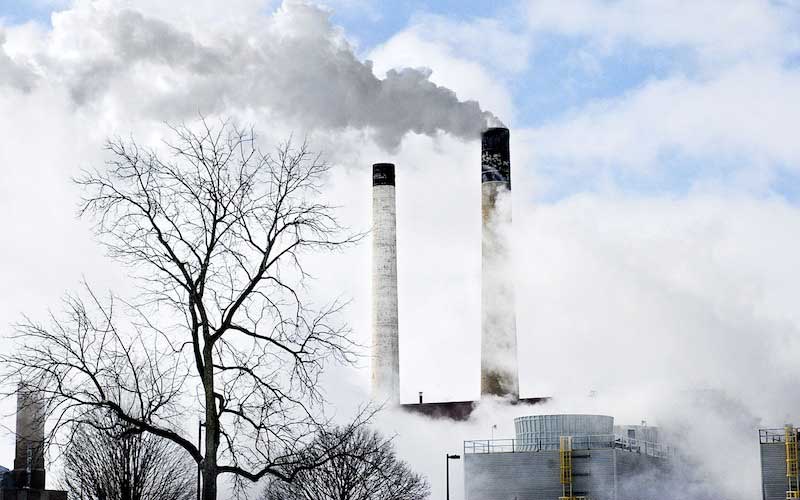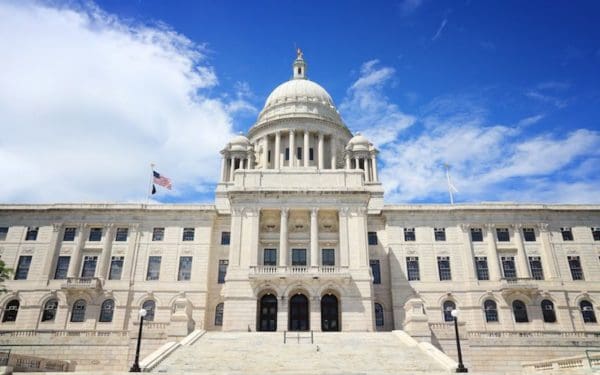
Rhode Island might be further from its climate goals than the State realizes. Photo Credit: pixabay
UPDATE: Rhode Island has still not corrected how it measures dangerous greenhouse gas emissions. The State continues to dramatically underestimate the amount of methane – an extremely potent greenhouse gas – leaking from its pipes. To ensure Rhode Island makes real progress in cutting its carbon pollution, the legislature should adopt the Act On Climate 2020 bill – which would turn the State’s existing emission reduction goals into mandatory targets and hold the State accountable for achieving them.
According to Rhode Island’s most recent greenhouse gas emissions inventory, the State has already cut its climate-damaging emissions more than 10% below 1990 levels. But there’s reason to question that finding.
A recent report shows that the State has been drastically underestimating the amount of dirty gas leaking from its aging gas infrastructure. Additionally, the State’s report fails to accurately compare its current emissions with the 1990 levels it’s using as a baseline.
This has enormous implications for our understanding of how much Rhode Island is really polluting and how close the State is to achieving its climate goals. During her reelection campaign, Governor Raimondo pledged to make the State’s emissions targets mandatory and enforceable, though she has yet to do so. It’s time for the State to step up its efforts to cut carbon and avoid the worst impacts of the climate crisis.
Rhode Island May Not Be on Track to Meet its Climate Goals
Every three years the State publishes a greenhouse gas inventory, tallying emissions from all sources, from vehicle tailpipes to power plant smokestacks. In October, the Department of Environmental Management released its Draft Rhode Island Greenhouse Gas Emissions Inventory. The inventory offers a rosy outlook, indicating that the State is ahead of schedule in accomplishing the climate goals laid out by the 2014 Resilient Rhode Island Act.
However, a recent report by the Stockholm Environmental Institute and Brown University’s Climate and Development Lab argues otherwise. It shows that the State has been underestimating the severity of gas leaks – which occur at nearly every part of the gas production and distribution process. Natural gas is approximately 90% methane, an extremely potent greenhouse gas. Small differences in leakage rates can therefore have massive impacts on State emissions.
According to the report, more accurately accounting of gas leakage rates results in a 45% increase in estimated overall statewide emissions!
Another reason to question Rhode Island’s official inventory is that the latest emissions estimates were calculated differently than the 1990 baseline. The Department of Environmental Management sometimes updates its accounting practices to take advantage of emerging science. However, it does not recalculate the numbers from previous years using these updated methods. But it’s important to recalculate at least the 1990 baseline inventory with current accounting practices to allow for an ‘apples-to-apples’ comparison and to more reliably track the State’s progress.
CLF submitted comments on the draft emissions inventory, encouraging the State to incorporate the best available science on gas leaks and to recalculate the 1990 baseline emissions. Ensuring that Rhode Island’s emissions accounting is as accurate as possible is critical to understanding the State’s contribution to the climate crisis and what it has to do to meet its emissions reduction goals.
Rhode Island Must Redouble Its Efforts and Address the Climate Crisis
Perhaps the most important takeaway from all of this is that the work of decarbonizing Rhode Island’s economy has only just begun. There are a number of important steps the State should take to put itself on a path to meeting its climate goals.
- The Governor must make good on her promise of mandatory, enforceable goals for emissions reductions. The State’s goals under the Resilient Rhode Island Act are only aspirational. Governor Raimondo has said she supports the idea of making these goals mandatory, but has failed to follow through. It’s past time for Rhode Island to join its neighbors in the region and make our emissions reduction goals mandatory and legally enforceable.
- Rhode Island must accelerate its transition away from fossil fuels and towards clean sources of power. We commend Governor Raimondo’s commitment to procuring 1,000 megawatts of clean energy by 2020—and the State’s progress in achieving that goal. However, a recent report suggests that 1,000 megawatts comprises only a tiny fraction of the renewable energy the State will need by 2050. The State needs to move faster towards adopting clean, renewable energy like solar and wind.
- The State must not allow the construction of new fossil fuel-fired power plants. By denying a permit for a proposed gas and oil power plant in Burrillville earlier this year, the State narrowly avoided a disastrous long-term commitment to dirty fuels. Had that plant been built, it would have been impossible for the State to achieve its emissions reduction goals. While that plant is dead, new proposals can come along at any time. The State must ensure that no new plant receives a permit unless it is compatible with the State’s emissions reduction goals.
- Rhode Island must stop relying on dirty fuels like gas to heat our homes and businesses. Burning fossil fuels for heat accounts for roughly 35% of State greenhouse gas emissions. That’s in addition to the unavoidable gas leaks discussed above. Rhode Island simply cannot meet its goals without addressing its overreliance on fossil fuels like gas. In addition to reducing emissions, moving away from gas provides reliability and safety benefits, protecting customers from events like the week-long outage in frigid temperatures on Aquidneck Island earlier this year and the 2018 explosions that caused a death as well as dozens of injuries and widespread evacuations in Massachusetts’s Merrimack Valley.
The Next Step for Rhode Island’s Climate Goals
As we work to make our climate goals enforceable, we must also ensure they reflect the latest science. The Resilient Rhode Island Act suggests an 80% reduction in emissions by 2050. But the most recent analysis indicates that we should be striving for net-zero carbon pollution by 2050 at the very latest. That’s the cutoff to avoid warming beyond 1.5°C and the widespread harm it would cause to people and the environment.
A more aggressive emissions reduction timetable is both necessary and possible. The question Rhode Island has to answer now is whether we will invest in switching to clean energy, more efficient buildings, and cleaner cars now – or pass the enormous costs of inaction on to future generations.
You can help by contacting Governor Raimondo at (401) 222-2080 or emailing her at governor@governor.ri.gov. Tell her it’s time to make good on her climate promises.
(This blog was originally published on December 10, 2019)



